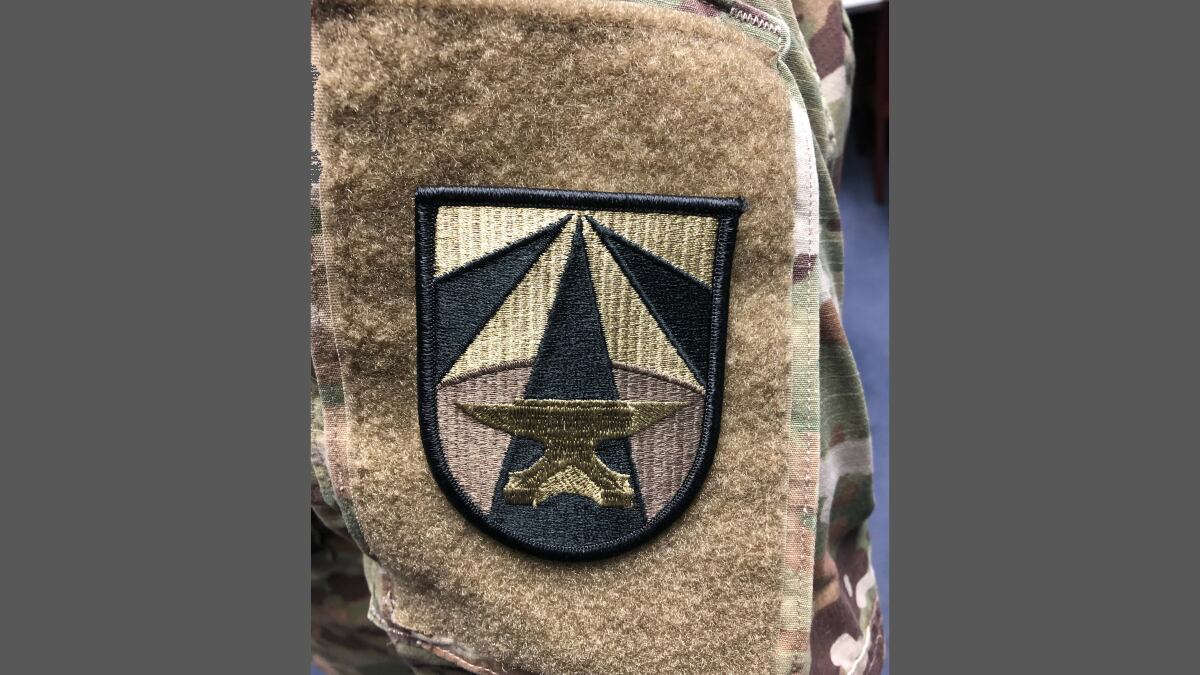WASHINGTON — The Army Futures Command is set to run on all cylinders by the end of the month when it plans to declare full operational capability, a graduation from the new command’s developmental stage it entered roughly a year ago.
AFC commander Gen. Mike Murray and Bruce Jette, the Army’s acquisition chief, told reporters July 16 at an event showcasing its modernization headway at Fort Myer in Arlington, Virginia, that the command would reach full operational capability July 31.
The new four-star command, which is aimed at accelerating modernization and staying ahead of peer adversaries Russia and China, set up shop in a few unfinished floors of a high-rise owned by the University of Texas, overlooking the heart of downtown Austin, in late August 2018.
Those working for the command intended to regularly ditch the uniform in favor of civilian attire and would spend the next year rubbing elbows at the local coffee shops with the young and hip start-up community that permeates the business environment in the city center.
And the service embedded roughly 100 personnel at the neighboring Capital Factory — an innovative entrepreneur’s hub — that shares a building with an Omni hotel.
The command also gained roughly 10,000 square feet of office space and laboratories at the Cockrell School of Engineering, just a five minute drive from its new headquarters.

Over the past year, AFC moved outside of the usual Army acquisition box to seek ideas and innovation beyond its own labs and big defense firms and even made an out-of-character appearance at South By Southwest, which has become a see-and-be-seen gathering of the interactive, film and music industries held in Austin annually.
But forging a new path in the way the Army does business isn’t perfect. Just this week, the Government Accountability Office issued a report stating the AFC needs to better engage small businesses vital to the defense industrial base.
RELATED

A year building up the command may not be enough time to determine if the Army has broken its archaic procurement mold, but the eight cross-functional teams formed under the AFC to tackle the Army’s top six modernization priorities have made headway with low-hanging fruit, but have also truncated daunting timelines for some major future weapons systems.
Leaders from the CFTs descended on Washington to showcase accomplishments, presenting small 3D models and displays to media over a brief 45 minutes at Fort Myer and then again on Capitol Hill July 17.
Within the Army’s top priority — Long-Range Precision Fires — the service is beginning integration of Extended-Range Cannon Artillery (ERCA) onto an M109A7 self-propelled howitzer.
And Raytheon and Lockheed Martin are scheduled to competitively demonstrate Precision Strike Munitions this summer that will reach an INF-compliant range of 499km. The goal is to replace the Army Tactical Missile System with the longer-range capability as soon as 2023, which dramatically pushes up an original goal of 2027.
The service will shoot a hypersonic missile out of a 50-inch missile booster stack in the second quarter of 2020, the Army’s military deputy to the acquisition chief, Lt. Gen. Paul Ostrowski, told an audience at an Association of the U.S. Army breakfast July 16.
Some of the earliest efforts to reach soldiers are the Enhanced Night Vision Goggle-Binocular. Soldiers, Marines and special operators are already trying out the Army’s Integrated Visual Augmentation System (IVAS) — a set of goggles that empower forces with targeting and navigation aids as well as other situational awareness features — on live ranges.
In the training realm, the service awarded contracts to build virtual trainers, which will make up a critical part of its emerging Synthetic Training Environment (STE) — a virtual world in which to train soldiers for war across domains with the goal to move the service away from its stove-piped, technologically ancient systems from the ‘80s and ‘90s.
The Army is also building Maneuver Short-Range Air Defense (M-SHORAD) prototypes that will be ready for soldier testing in October this year, according to Col. Chuck Worshim, program manager for cruise missile defense systems with the Army’s Program Executive Office Missiles and Space. The program is right on schedule to fill an urgent operational need in Europe by providing four battalions’ worth of systems by fiscal year 2022.
The M-SHORAD effort resides within the Air-and-Missile Defense CFT.
But some of the bigger tests are coming when the Army, for example, embarks on buying two brand new state-of-the-art helicopters back-to-back to fill the foreseen vital missions of long-range assault and attack reconnaissance.
The Future Vertical Lift CFT director said the Army recently passed an Army Requirements Oversight Council (AROC) review approving its abbreviated Capabilities Development Document (CDD) this month for its Future Long-Range Assault Aircraft (FLRAA). That means service leadership is on board with the requirements set forth within the program office to proceed with a request for product proposals from industry to begin a competition.
The Army will host an industry day July 31 to discuss the way forward and to outline the requirements leading into a competition.
FVL CFT Director Brig. Gen. Wally Rugen told Defense News that because of how well the Joint Multi-Role Technology Demonstrator program has gone — an effort that looked at the realm of the possible for vertical lift air vehicles — the Army is now looking at a promising “multiyear acceleration” of the FLRAA program. This comes as no surprise since the Army has been looking for a way to speed up the program for several years.
The Future Attack Reconnaissance Aircraft (FARA) program is also on an ambitious schedule. The Army has awarded design contracts to five teams. Only two teams will move forward to build prototypes that are expected to fly by 2023. The five teams will deliver designs by next winter. A production decision could happen in 2028, but the service is looking at any way possible to speed up that timeline.
But with the Army’s dismal track record when it comes to pursuing new helicopters, many in the defense community are questioning whether the service can get one aircraft flying, let alone two.
Same goes with the rapid timeline the Army has set for the acquisition of an Optionally Manned Fighting Vehicle (OMFV) to replace the Bradley fighting vehicle. It is the first vehicle the service is pursuing in its Next-Generation Combat Vehicle (NGCV) portfolio.
The Army’s history in vehicle procurement is also painful with the cancellation of its Future Combat System as well as the failed Ground Combat Vehicle program. The NGCV CFT aims to get beyond the FCS heartburn and field a more capable vehicle by 2026.
Bradley-manufacturer BAE Systems has already taken itself out of the running for the OMFV program, leaving an uncertain number of competitors in the field. Solicitations are due in the fall and the Army is expected to downselect to up to two to build 14 prototypes in the spring next year.
The Army has also wrestled with the replacement of its Patriot air-and-missile defense system — struggling the most to replace its radar with something more capable to go up against evolving threats. The service allowed teams to demonstrate new radars this spring and vendors are now submitting proposals, with several confirming participation this week, to compete in the Lower-Tier Air-and-Missile Defense Sensor (LTAMDS) competition.
Despite struggles of the recent past to bring on major weapons systems to fruition, there are many who are hopeful that the AFC’s focus on flexibility will help finally push these big programs over the edge into the hands of soldiers in the field.
Jen Judson is an award-winning journalist covering land warfare for Defense News. She has also worked for Politico and Inside Defense. She holds a Master of Science degree in journalism from Boston University and a Bachelor of Arts degree from Kenyon College.




